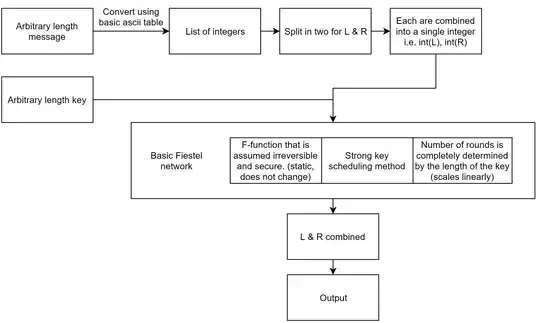It's not a good idea to assume that your F-function is strong by itself. With very few exceptions, it's not true even with professionally-designed Feistel networks. In fact, the reason Feistel networks are even needed is because they're used to build a secure PRP from an insecure PRP or PRF. Said insecure function must be designed so that it is extremely lightweight and is secure after sufficient iterations.
Without more information, no one can tell you how to design a key schedule. They're generally tightly integrated with the rest of the cipher. All we can do is give you possible designs that would be inefficient but would work, or which would only be secure assuming your F-function is a strong PRF (which is quite an assumption). You have to think about a few things when designing a key schedule:
Do you need key agility and if so, how light must the key schedule be?
How does it interact with the rest of the cipher (this is a very complex question)?
What is your maximum memory and ROM footprint?
Is side-channel resistance important to you?
What kinds of operations do you wish to implement it in?
If you are not making any assumptions about the F-function, then you could use an algorithm like HKDF to expand an input master key into an arbitrary number of subkeys. If you do assume that the F-function is a strong PRF, which it very likely will not be, then the key schedule could be as trivial as XORing a round counter (functioning as a round constant) with the key to derive each round key. That would be necessary to avoid the slide attack, but relies on assumptions about the F-function's security.

what key schedule should I create/use/adapt for this cipherseems like a question for academic researchers rather than crypto.se. We require questions that can be objectively answered without lots of back and forth between the asker and users that attempt to answer the question. There is clearly a lot of back and forth going on already. Besides that, the need for a key schedule that works no matter the key length is an XY-problem: There's no need/benefit for an encryption algorithm that works with an arbitrary key length, so the easiest solution is to change that part instead. – Ella Rose Apr 26 '19 at 23:57